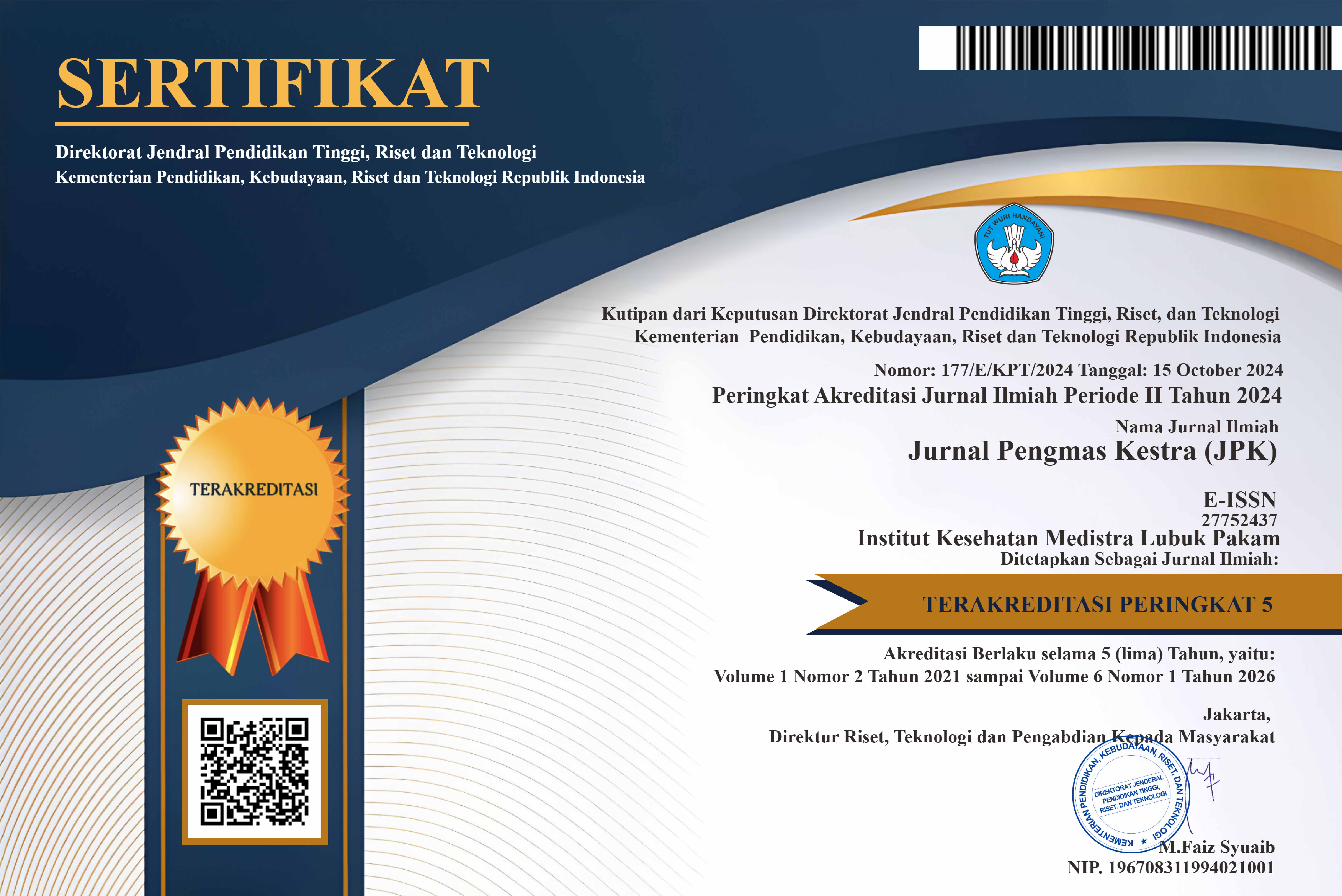NURSE EMPOWERMENT IN INCREASING COMMUNITY SATISFACTION AT GL TOBING GENERAL HOSPITAL, TANJUNG MORAWA DISTRICT, DELI SERDANG REGENCY
DOI:
https://doi.org/10.35451/jpk.v2i1.1154Keywords:
Community Satisfaction Index, Empowerment, NurseAbstract
The community satisfaction index (IKM) is an indicator that can be used to measure the level of satisfaction of the community or service users through quantitative or qualitative methods by comparing expectations and needs. The value of satisfaction with the services provided will be useful in efforts to improve services and maintain services that are considered good by users. The hospital as a health institution that is directly related to the community will always need services related to the services provided in an effort to improve and service quality. Hospitals have a variety of human resources, both medical and non-medical. Nurses are medical human resources who deal directly with service users. Almost all hospital service users are in contact with nurses in getting the services available. Nurses with optimal roles, duties, functions and responsibilities will be able to provide satisfaction for service users. Services provided as a resource that is directly related to users will have a major impact on hospital institutions. Optimizing and empowering nurses by providing understanding related to training, functions and responsibilities through discussions and simulations are expected to increase the community satisfaction index. In this community service activity (PkM), there were 62 nurses as participants. Empowerment participants were given training materials, discussions and simulations to improve the services provided. PkM is carried out using pre-test and post-test methods in assessing the level of understanding of the participants. The results of the empowerment that have been carried out have shown improvements to empowered participants in terms of improving service quality. There was an increase from 29% to 68% related to the results of empowerment that had been provided through the evaluation carried out.
References
Hardiansyah. 2011. Kualitas Pelayanan Publik : Konsep, Dimensi, Indikator dan Implementasinya. Jogjakarta: Gavamedia
Hariany Z, Matondang AR. 2014. Analisis indeks kepuasan masyarakat terhadap pelayanan public di puskesmas XXX. Jurnal Teknik Industri USU. 5(2): 17-21.
Hidayati T, Faraswati R. 2022. Pemberdayaan keluarga dalam upaya pencegahan dan penanggulangan anemia ibu hamil. Jurnal pengabdian masyarakat kesehatan STIKES Pemkab Jombang. 8: 193-199
Listyono RA. 2015.Studi deskriptif tentang kualitas pelayanan di Rumah Sakit Umum Dr. Wahidin Sudiro Husodo Kota Mojo Kerto Pasca menjadi Rumah Sakit Tipe B. Jurnal Kebijakan dan Manajemen Publik. 1 (1) : 1-7.
Wahyudi, I. 2020. Pengalaman perawat menjalani peran dan fungsi perawat di Puskesmas Kabupaten Garut. Jurnal Sahabat Keperawatan. 2(1): 36-43.
Downloads
Published
Issue
Section
License
Copyright (c) 2022 JURNAL PENGMAS KESTRA (JPK)

This work is licensed under a Creative Commons Attribution 4.0 International License.
Copyright in each article is the property of the Author.




















